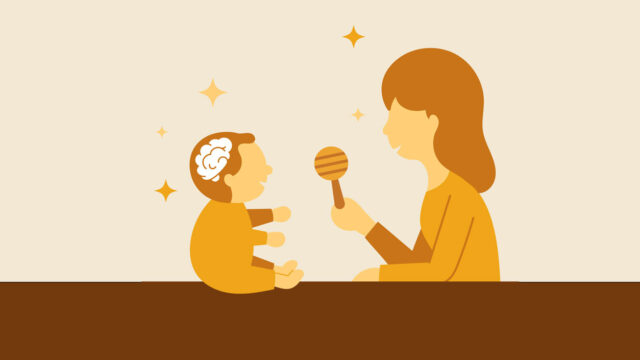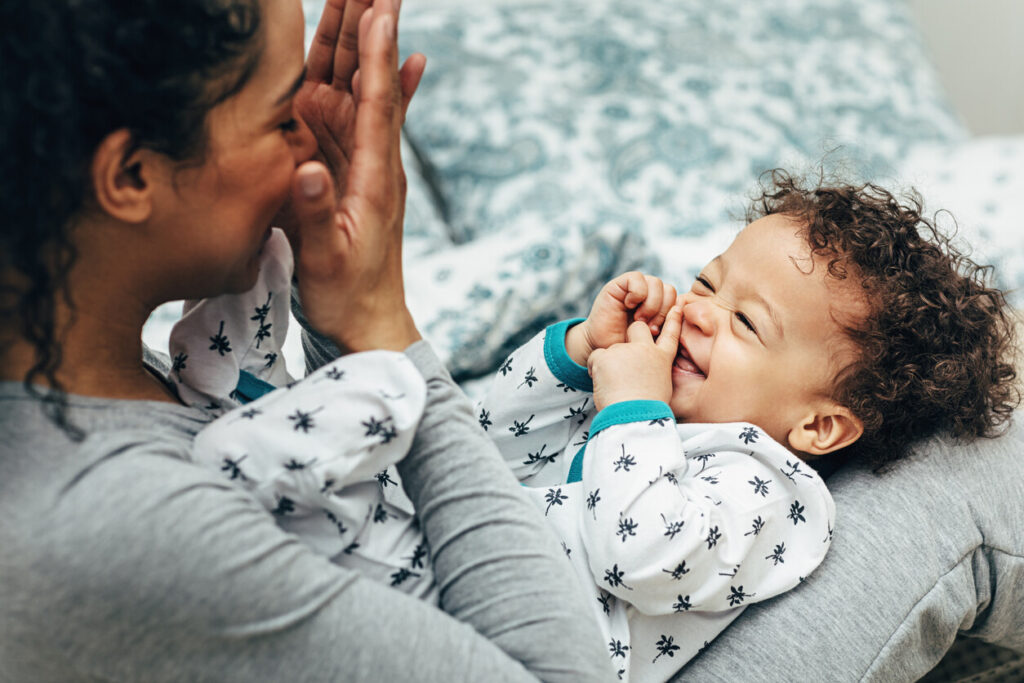Serve and Return


Key Takeaways
- Serve and return interactions—responsive, back-and-forth exchanges between a young child and a caring adult—play a key role in shaping brain architecture.
- These interactions, much like a lively game of tennis, form a critical part of a child’s social environment and are crucial for early development.
- They support development of early language and social skills that serve as a foundation for more complex, high-level cognitive abilities that form later in life.
Fast Facts

Responsive, attentive relationships with a caring adult help build a strong foundation for a child’s brain architecture and for all future health and well-being. When an infant or young child babbles, gestures, or cries, and an adult responds with eye contact, words, or a hug, this back-and-forth interaction—known as serve and return—helps to build and strengthen neural connections in the child’s brain. These connections are essential for the development of communication and social skills. Much like a lively game of tennis, these exchanges are not only fun, but they also provide good, skill-building practice.
When caregivers are attentive and responsive to a child’s needs and signals, they create an environment rich in serve and return experiences. There are countless ways for caregivers to engage in these essential exchanges, and you can find some ideas in our handout, 5 Steps for Brain-Building Serve and Return.
To learn more about Serve and Return, check out the related Working Paper, InBrief, Videos, and more!
Because responsive relationships are expected by the developing brain—and essential for building healthy brain architecture—the absence of these relationships can pose a significant threat to a child’s development and well-being. Healthy brain architecture depends on a sturdy foundation built by stable, interactive relationships with caring adults and positive influences from a child’s developmental environment. When an adult’s responses to a child are inconsistent, harmful, or simply absent, developing brain architecture may be disrupted, potentially leading to long-term impacts on health and well-being. The persistent absence of serve and return interactions not only deprives the brain of the positive stimulation it needs but also activates the body’s toxic stress response, which can flood the developing brain with harmful stress hormones.
There are many reasons why a caregiver might not engage in consistent, responsive serve and return interactions with young children. Significant stress brought on by financial challenges, a lack of social connections, or chronic health issues can make responsive caregiving more difficult, and many caregivers experience several of these challenges at once. Longstanding racist policies, such as redlining, have increased the volume of such challenges placed on caregivers of color, and climate change stands to worsen inequalities for racially marginalized communities and families with low income. For example, increasing extreme heat makes it harder for an adult to provide consistent, responsive care, and for a family with low income living without air conditioning in a rural area—or for a family living in an urban heat island without access to cooling green space—the challenges only increase. Policies and programs that support adult caregivers, strengthening their capabilities and capacity for consistent, responsive caregiving, are vital for addressing inequities across communities and fostering healthy developmental environments for children and their caregivers.